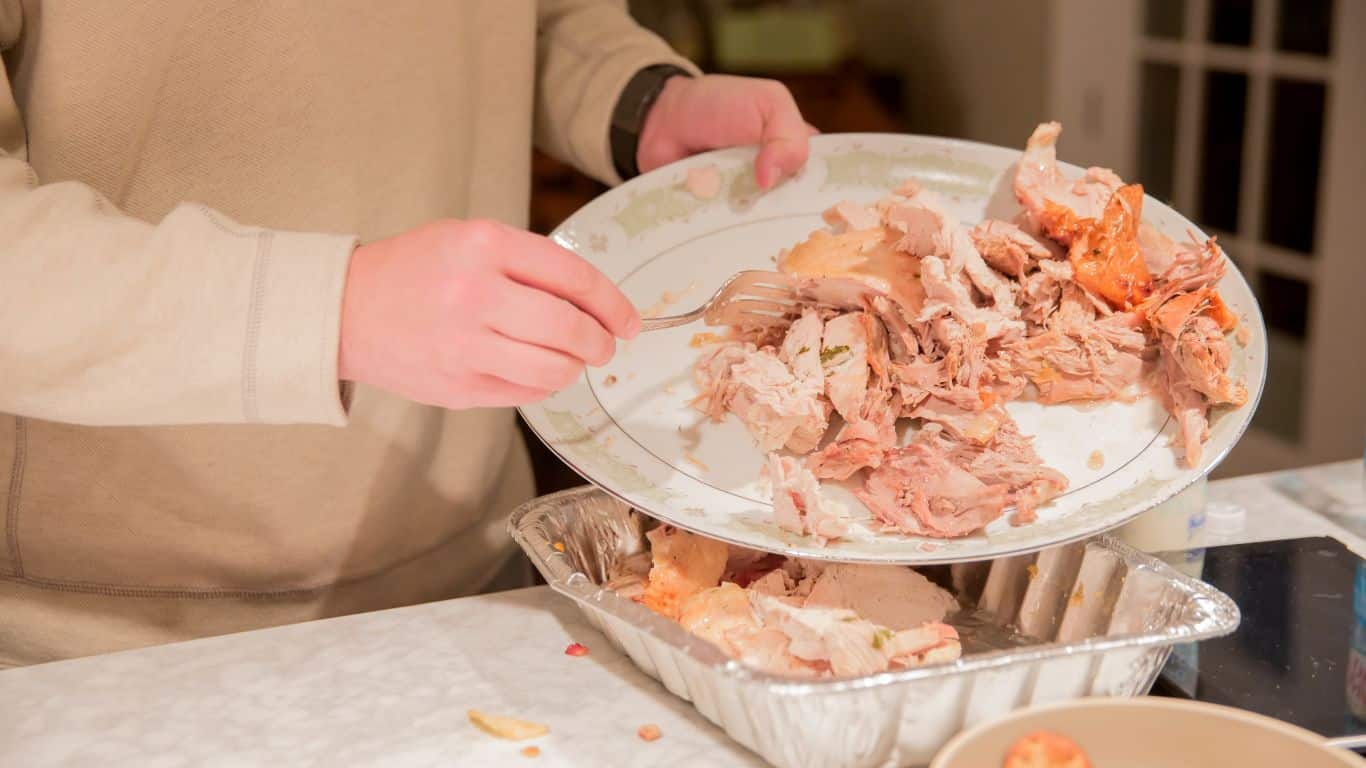Mastering Google’s Helpful Content Update
You think you have a stellar website. You’ve got impressive graphics, a comprehensive list of your products or services, and the flashy “Contact Us” button at the top of every page. You’ve even got some SEO keywords thrown in the mix. So why isn’t your website pulling in traffic and leads? The reason may be that search engines are putting a premium on what they call “Helpful Content.”
At Invite Them Home, we hear this confused song of frustration from digital marketing prospects daily. Marketing and sales manager ask us for help with their digital marketing strategies. You may think you know how to write content that performs for your website, but if you’re not giving your target audience the information they want exactly how they want it, search engines will recognize that and won’t give your site the time of day. The saying is that if you want to hide a body, bury it on the 2nd page of Google search results, and there is some truth to that. With Google’s new core update focused on content quality, web pages that used to be visible are now MIA. In many cases, companies need to go back and adjust their digital marketing strategy to address search rankings that have fallen and improve content that no longer meets the needs of their target audience.
Does this mean your website is hopeless? Of course not! You just need a little guidance from Invite Them Home. Read on to learn what type of content your audience is looking for and how to deliver it better than your competitors. Need help? While much of the SEO community is having a “pants on fire” moment, we and our customers have seen an increase in organic search traffic despite decreasing ranking keywords (more about that later).
How do I write content for my website?
What do you mean by content marketing?
What are the benefits of content marketing?

Content marketing has a number of pluses. It has a long-lasting impact. While ads only have an impact while you run them, and social media platforms will soon send your posts into the depths of users’ feeds, well-written content will perform month after month. In fact, basic updates will serve your needs year after year.
In addition, content written to answer questions will not only attract new prospects but also lower your support costs as you answer questions and provide guidance to your customers online.
For more information on content marketing, check out this page.
What is E-E-A-T?

Google has long encouraged content creators to create content that meets E-E-A-T guidelines. E-E-A-T is an acronym for Experience, Expertise, Authoritativeness, and Trustworthiness, which is a component of Google’s Search Quality Rater Guidelines. In a nutshell, you should not produce content unless you can speak on your topic from experience, would be judged by your peers as having expertise on the subject, and are presenting content that is authoritative and trustworthy. These guidelines are used by “Quality Raters” to assess the expertise of content creators. E-E-A-T is not a ranking factor, but it can help improve the quality and credibility of a website, which can lead to higher rankings in Google search results.
Table of Contents
How do you write helpful content?
6 Considerations for Developing Your Content Creation Game Plan. Digital marketing tips that you can use to improve your existing content.
Creating compelling content for your website is a meticulous job that requires a deep understanding of your purpose, audience, and the digital environment. Remember, maintaining high-quality website content is an ongoing process that requires commitment, creativity, and strategic thinking. The work doesn’t end with publishing the content. Regular updates are necessary to keep your content valuable, accurate, and relevant. This could mean revising outdated information, adding new sections, or revamping your calls to action.
As you execute your marketing strategy, you will need data to monitor how well you are meeting your KPIs. Start with free tools such as the Google Search Console and Google Analytics. The tools will let you know which search keywords are turning into website visits and which of your web pages are performing well. Of course, as a digital marketing agency, we use many paid digital marketing tools. They let us look at each blog post and see what keywords it ranks for and what web pages compete with your content. While it may not be practical for you to spend money on these tools yourself, a digital marketing agency will use them to help your content gain visibility.
Here are 6 key considerations for high-performing website content:
1. Understand Your Audience:
Before you begin building your website content, start by developing a clear understanding of your target audience. This is often referred to as your visitor personas. Take note of their demographics, interests, and online behaviors. Analytics tools can help unveil which topics resonate with your audience and what type of content keeps them engaged, be it videos, articles, or infographics.
2. Define Your Content Goals:
Clear objectives are vital. What do you want your content to achieve? Are you looking to educate, entertain, inform, or convert your visitors to buyers? Your goals will dictate the type of content you create. For example, if conversion is your ultimate aim, then problem-solving content with clear calls to action should be your focus. Combine the information about your target audience from your research above and address their pain points and questions. When creating content, take a step back and ask yourself how this page will meet the needs of your existing or intended audience.
3. Analyze Competitor Content:
Reviewing your competitors’ content strategy can provide valuable insights. Visiting sites offering similar products or services helps you understand what kind of content is driving their engagement and shows what your target audience might find appealing. Take a look at our competitor monitoring services for more information on this crucial aspect.
4. Keep It Easy to Scan:
Since roughly 60% of web traffic is on mobile devices, you must make your content scannable so your audience can find valuable information with minimal effort. Online users often skim rather than read through the entire piece. So, breaking your content with subheadings, short sentences, and bullet points improves readability and engagement. If you are using a website builder, it will often include templates to help you organize your content in a logical, mobile-friendly flow. Note that the content on this page has lots of headings and bold text. That has been done so that it is easy for you to skim the content and find topics that interest you.
5. SEO and Discoverability:
Good website content strategically incorporates SEO (search engine optimization) keywords. However, search algorithms are getting smarter, and search engines know the difference between quality content and “keyword stuffing.” Basic SEO practices like keyword inclusion in titles, meta tags, body copy, and URL slug, optimizing images, and inserting relevant internal links can significantly boost your website’s ranking in search engine results. Evergreen content, such as comprehensive guides and FAQs, can establish your site as an authoritative source and boost your SEO long-term.
Paying attention to your target audience is always the most important aspect of your digital marketing efforts. However, that does not mean that you do not take advantage of SEO strategy to attract customers.
6. Performance Measurement:
Components of a web page with “Helpful Content.”

Let’s have some fun and show you a practical example of “helpful content.” The sample web page below illustrates many aspects of helpful content best practices. Look at the shaded text to see what aspects of creating content to meet the needs of the target audience are used in each of the sections below.
Greetings and setting expectations of what the page offers.
#1: How to roast a turkey that your guests will love
Table of Contents
Start at the beginning; do not make assumptions about the reader’s knowledge or preparedness.
#2: Before you begin, pre-roasting decisions
Congratulations. You are providing the focus of your upcoming meal. Besides the guests, your turkey will be the star, and we are here to help you shine. Let’s start with your first decision: How large of a turkey should you buy? We are going to assume that you will be buying a frozen turkey from your local grocery store. If you are buying a fresh, organic, free-range turkey, you probably do not need our guidance.
How large of a turkey should you buy?
Frozen turkeys typically range in weight from 6-24 pounds. A general guide is to purchase a bird that weighs one pound per adult guest. Remember that your turkey will have giblets, a neck, and perhaps a (generally worthless) gravy packet; then, of course, it has bones. So, while one pound per person sounds like a lot, it’s not if you want plenty for your guests and some leftovers, too.
How to thaw your turkey?
Frozen turkeys are… frozen and must, of course, be thawed before you cook them. The USDA recommends thawing a turkey in your refrigerator because it’s the safest method. The turkey will thaw at a consistent, safe temperature, but it takes some time. You should allow one day of thawing for every 4–5 pounds of turkey. For example, a 16-pound turkey will take about four days to thaw.
Alternatively, you can thaw your turkey in a roasting pan. Get home with your newly purchased turkey, or remove it from your freezer about 8 – 12 hours before you cook it. Set the turkey in the roasting pan with the plastic covering still in place. However, feel free to remove the typical carrying mesh. Ideally, the turkey will be cold and still a bit frozen in the cavity with the neck and giblets. I scour the sink with a cleanser and then run hot water into the cavity to finish the thaw so that I can remove the neck, giblets, and anything else hidden inside. (Note: sometimes the giblet package is hidden under the flap of skin at the front of the bird where the neck was removed.)
To Stuff or not to stuff, that is the question.
If you plan to stuff your turkey, you will need an extra 30 mins of pre-cooking time to prepare the mix. Also, note that you will need to add about 15 – 20 mins to your cooking time if you will be stuffing your turkey. Need a great stuffing recipe? Click here for Herb’s savory stuffing recipe (Link for illustration purposes only)
Cover the topic from a high level, bring forth key topics
#3: Before you start cooking, determine your total preparation time
- When do I want to serve my turkey?
- How large is my turkey?
- Is my turkey stuffed?
- Pre and post prep time
If you are stuffing the turkey, allow one hour before you will be poping your turkey into the oven. If you will not be stuffing the turkey, allow 30 minutes of pre-roasting prep time.
You will want to let the roasted turkey “Rest” about 20-30 minutes before carving and serving. This time will make carving the turkey easier and give you time to make your gravy if desired.
To the times above, add your roasting time as follows:
| TURKEY WEIGHT | COOKING TIME |
|---|---|
| 10 to 12 lb | 2 1/4 to 2 3/4 hours |
| 12 to 14 lb | 2 3/4 to 3 hours |
| 15 to 18 lb | 3 1/4 to 4 hours |
| 18 to 20 lb | 4 to 4 1/4 hours |
| 20 to 22 lb | 4 1/4 to 4 3/4 hours |
| 23 to 24 lb | 5 to 5 1/4 hours |
Follow the times above for turkey cooking times based on the size of your bird. All cook times are based on placing a whole unstuffed turkey on a rack in a roasting pan and into a preheated 350 degrees F (175 degrees C) oven.
Will my turkey be done within the allotted time?
The answer to that is probably, but we suggest you do not rely solely on the time or the little plastic pop-up thing your turkey comes with. Account for the information below:
- Turkey is done at an internal temperature of 165 degrees F (75 degrees C).
- Allow the turkey to rest for at least 30 minutes before carving and serving.
- Using an oven thermometer and a meat thermometer to get accurate temperature readings is recommended.
#4: Seasoning your turkey

Lightly coat the turkey with olive oil.
#5: Roasting your turkey
Carefully place your roasting pan into a preheated 350-degree oven for an unstuffed bird or 325 degrees for a stuffed bird with the additional 30 minutes of cooking time.
Check the water level every hour and add water as needed. The water will prevent the turkey from burning to the bottom of the pan and will also be the base of your gravy. The humidity also helps keep the turkey moist and tender.
About one hour before your anticipated finishing time, remove the foil cover. Removing the foil will let the skin brown.
One hour before your estimated done time is also a good time to check the internal temp of your turkey with a meat thermometer. Insert it into the deep breast area, about two or more inches. When this temperature reaches 165 degrees F, your bird is done and can be removed from the oven to allow it to rest for carving. It is normal for roasting times to vary as they depend on your oven temperature, the initial temperature of your turkey, and, of course, the size and whether or not it was stuffed.
Remember that a slightly overdone turkey is much better than an undercooked one!
#6: Serving your turkey
Now is the time for your turnkey to rest, but not time for you to rest! If you are making gravy (this would be an excellent place to add a link to your favorite gravy recipe), spoon the liquid from the pan into a kettle. You may choose to discard some of the fat if desired.
Next, carefully spoon the hot stuffing out of the cavity and any other areas of the bird and pan if you have stuffed your bird. It is common for some stuffing that was not covered to be toasted hard. This should not be a problem, and indeed, it is quite tasty and adds some texture.
Carve your turkey onto a platter, and present light and dark meat. Generally, do not add additional salt, but perhaps have a salt shaker on your table for your guests to use. If you did make gravy, you might consider drizzling some onto the white meat if it appears at all dry.
Serve and enjoy and bask in the glow of a job well done.
#7: Turkey Leftovers

At this point, we hope that your guests did not only eat turkey but other dishes and left you with some leftover meat. For food safety reasons, it is important to either refrigerate the remains of your turkey within an hour of finishing your meal or debone your meat from the turkey at that time.
If there is a large section of a turkey breast remaining, that can be removed as a single piece. If it will not be used in the next day, wrap it in aluminum foil and place it in a zip lock bag for freezing. Label the bag with the cooking date for reference. Your turkey will remain tasty for your favorite recipes for many months in the freezer. Smaller pieces of turkey are best frozen in a freezer container rather than a bag to help prevent freezer burn.
It is best to use turkey that is not frozen within 3 or 4 days. There is nothing better than a homemade turkey sandwich for lunch.
Get Your Web Content Cooking With Invite Them Home!
If you’ve read this article and you’re still confused about how to write helpful content, that’s ok! Content marketing is a complicated process that requires a significant amount of time, thought, and research. Thankfully, Invite Them Home has the copywriting services you need to unbury your website from the depths of Google and get noticed.
The plain truth is that even if your subject matter experts write helpful digital content, they may still need help from SEO specialists and their tools to perform as well as they should.
Of course, you want control over what gets posted on your own website. Our copywriters at ITH work with you closely to develop a content creation recipe, and nothing will ever show up on your site without your full knowledge and approval. If you’re ready to get started getting the quality leads you’ve been seeking through content marketing, team up with Invite Them Home before your competitors do!





